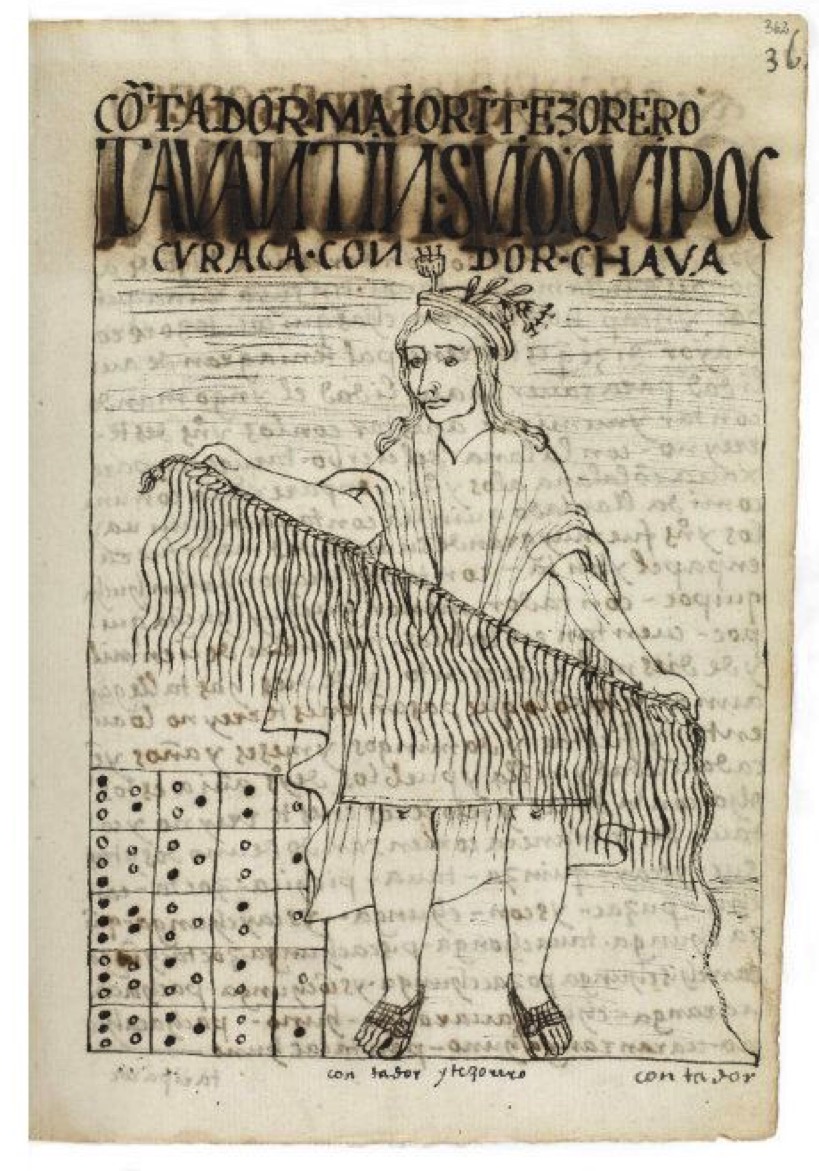History (-4000): Tiwanaku Pottery Depicts Quipu Storage Device
Record keeping system used by Incas more than 4,000 years old
This is a Press Release edited by StorageNewsletter.com on June 4, 2018 at 2:05 pmThis article comes from the Computer History Museum.
400: Tiwanaku pottery depicts quipu storage device
Record keeping system used by the Incas is more than 4,000 years old
17th century chronicle shows an Inca holding a complex quipu

(Courtesy of Det Kongelige Bibliotek [The Royal Library])
The Tiwanaku people lived in the Andes Mountains of South America around Lake Titicaca in today’s Bolivia from circa 1500 BCE until circa 1200 CE.
Evidence suggests a sophisticated culture adept at astronomical timekeeping, architecture, agriculture, and social order.
Shards of Tiwanaku pottery dated to around 400 CE bear artwork depicting a tribal elder or shaman with his arm extended horizontally. A series of knotted strings that today is known as a quipu dangles from the arm. Predating the Tiwanaku society, archeologists discovered the oldest known quipu made about 4,600 years ago at Caral on the Peruvian coast.
The Inca civilization that emerged in the region in the 13th century adopted the quipu to record and transmit tax records, census data and other information across the great distances of the Inca Empire. Quipu means ‘knot’ in the Peruvian Quechua language.
Europeans learned of the quipu when Spanish colonizers arrived in the Inca capital of Cuzco in 1532.
Suspicious of the purpose of these assemblies of knotted, colored cotton and wool cords, the conquistadors destroyed most of them. Less than 300 remain.
Information is embedded in a quipu in a number of ways. Strings dyed in different colors are connected with a wide variety and number of knots. The choice of string material in combination with the colors and styles of knots holds information that was readable by several South American societies.
Author of The Chronicle of Peru, Pedro Cieza de Leon, wrote in 1553: “Each ruler of a province was provided with accountants, and by these knots they kept account of what tribute was to be paid … and with such accuracy that not so much as pair of sandals was missing.”












 Subscribe to our free daily newsletter
Subscribe to our free daily newsletter
